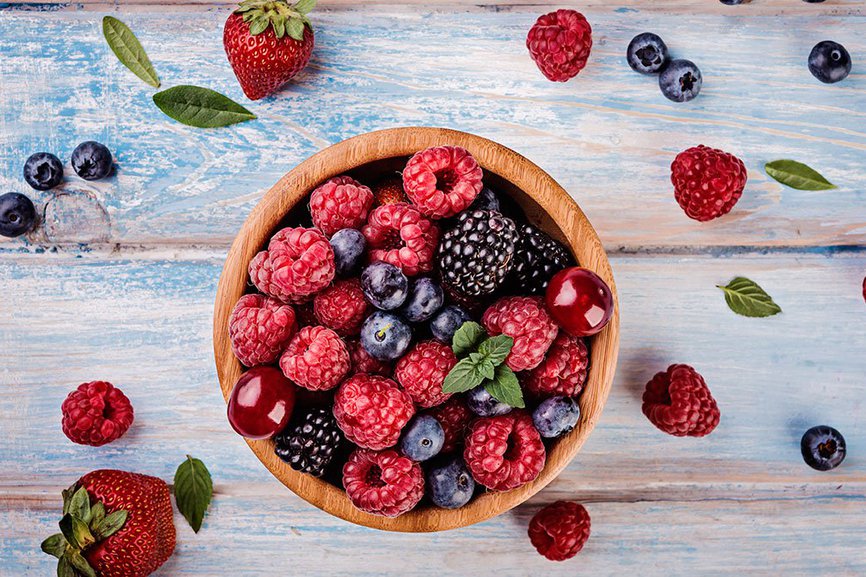Superfood Berries!

The Superfood for this month is berries and to celebrate, I’ve included some unberryable facts.
Did You Know…
- Strawberries have more vitamin C per serving than an orange
- Raspberries can be found in assorted colors including gold, black and purple, but red raspberries are the most common
- Technically, the blackberry is a drupelet, or a cluster of fruits, like a bunch of grapes
- Anthocyanins, flavonoids thought to help protect our brains give blackberries their glossy, dark color
- Blueberries don’t have as much vitamin C as other berries but are packed with other phytonutrients
- To ensure your berries star fresh, keep them dry and only wash right before you eat them
The Produce Doctor Part 5

For storage, leafy greens should be placed in a sealable bag along with a clean, dry paper towel and then into the vegetable drawer. Replace the paper towel every few days and keep doing so for up to three weeks for a head of lettuce or about a week for loose leaves like spinach. The paper towel will absorb the moisture therefore keeping your greens crisp. So long sogginess and stay fresh everyone!